How To Fix Embroidery Machine Bobbin Thread With Easy Steps
In this article, we will be discussing how to fix the bobbin thread on an embroidery machine. Embroidery machines are fantastic tools that can help create beautiful embroidery designs with ease, but sometimes issues can arise, such as the bobbin thread showing on top or the bobbin being incorrectly seated. With these easy steps, you can fix these problems and get back to embroidering your designs with confidence. So, let’s get started!

How To Fix Embroidery Machine Bobbin Thread With Easy Steps
How To Fix The Bobbin Thread On An Embroidery Machine:
Let’s see how can you fix the bobbin thread on an embroidery machine:
Adjust Tension
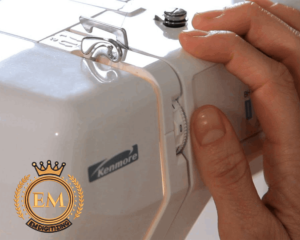
If you’re experiencing an issue where the bobbin thread is showing on top of your embroidery design, this is likely due to tension issues. To fix this issue, try adjusting the tension on your embroidery machine. Follow these steps:
- Refer to your embroidery machine manual to locate the tension adjustment dial or button.
- Make small adjustments to the tension, testing the stitching as you go.
- If the bobbin thread is still showing on top, adjust the tension further until the stitching is balanced.
Check Bobbin Type and Seating
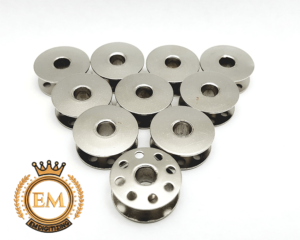
If adjusting the tension doesn’t solve the problem, then the issue may be with the bobbin itself. Here are some steps to follow:
- Ensure that you’re using the correct type of bobbin for your embroidery machine. Using an incorrect bobbin can cause issues with stitching.
- Check if bobbin is seated rightly in the bobbin case. An incorrectly seated bobbin can cause stitching problems as well.
Check Bobbin Winding and Thread Feeding

If you’re experiencing an issue where the bobbin thread isn’t showing up in your embroidery design at all, follow these steps:
- Check that your bobbin is properly wound with thread, and that the thread is feeding smoothly from the bobbin.
- Ensure that your embroidery machine is threaded correctly. An incorrectly threaded machine can cause issues with stitching.
Keep Your Machine Clean and Well-Maintained
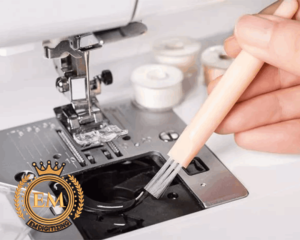
It’s important to keep your machine clean and well-maintained. Follow these steps:
- Regularly clean your machine and oil it as needed to ensure that it’s functioning properly.
- Replace worn or damaged parts as needed to keep your machine running smoothly.
Check Needle and Thread

If you’re still experiencing issues with the bobbin thread, it’s important to check the needle and thread. Follow these steps:
- Ensure that you’re using the correct needle for your embroidery machine and the type of fabric you’re working with.
- Check that the needle is properly inserted and tightened in the needle holder.
· Use high-quality thread that’s appropriate for embroidery.
Clear Thread Jams

If your embroidery machine is experiencing thread jams, this can cause issues with the bobbin thread. Follow these steps to clear any jams:
- Turn off your embroidery machine and unplug it.
- Remove the hoop and needle from the machine.
- Gently remove any tangled thread or fabric from the machine, being careful not to damage any parts.
- Re-thread the machine and re-insert the needle and hoop, making sure everything is properly tightened
Calibrate Your Machine
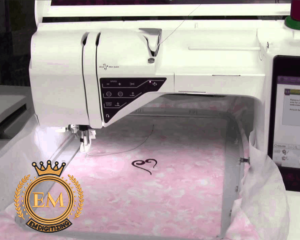
If you’re still experiencing issues with the bobbin thread, it may be necessary to calibrate your embroidery machine. Follow these steps:
- Refer to your embroidery machine manual for instructions on how to calibrate your machine.
- Make sure your machine is properly calibrated before starting any new embroidery projects.
Use the Correct Hoop
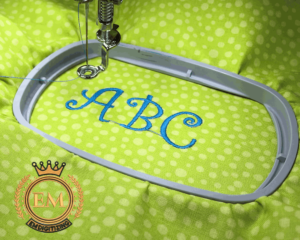
Using the correct hoop for your embroidery machine can also affect the stitching and the bobbin thread. Follow these steps:
- Refer to your embroidery machine manual to identify the correct hoop size for your project.
- Make sure your fabric is properly secured in the hoop to prevent shifting during stitching.
- If your fabric is not securely in place, it can cause the bobbin thread to show on the top of your design.
Use a Thread Net

A thread net can help prevent the bobbin thread from tangling or looping while you stitch. Follow these steps:
- Purchase a thread net that’s appropriate for the type of thread you’re using.
- Slip the thread net over your spool of thread before threading the machine.
- The net will help keep the thread from tangling or looping, which can cause issues with the bobbin thread.
Adjust Tension
Sometimes adjusting the tension on your embroidery machine can help fix issues with the bobbin thread. Follow these steps:
- Refer to your embroidery machine manual for instructions on how to adjust tension.
- Make small adjustments to the upper thread tension and test stitch a sample design.
- If the bobbin thread is still showing on the top or if the stitching is uneven, adjust the tension on the bobbin case.
- Test stitch again until the tension is properly balanced.
Clean Your Machine
Regularly cleaning your embroidery machine can help prevent issues with the bobbin thread. Follow these steps:
- Refer to your embroidery machine manual for instructions on how to clean your machine.
- Use a soft, dry cloth to wipe down the exterior of the machine after each use.
- Use a brush or compressed air to remove any dust or debris from the bobbin case, hook, and needle plate.
- Clean your machine more thoroughly on a regular basis to keep it in good working order.
Check for Burrs or Damage
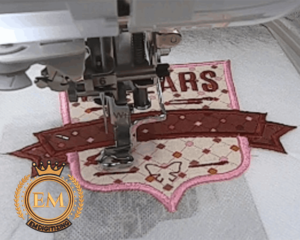
If you’ve tried all of the above steps and are still experiencing issues with the bobbin thread, it’s possible that there is damage or burrs on the bobbin case, hook, or needle plate. Follow these steps:
- Remove the bobbin case, hook, and needle plate from your embroidery machine.
- Inspect each component carefully for any burrs or damage.
- Use a fine-grit sandpaper or emery board to gently remove any burrs.
- If there is any significant damage, replace the damaged component.
Seek Professional Help

If you’ve tried all of the above steps and are still experiencing issues with the bobbin thread, it may be time to seek professional help. Follow these steps:
- Contact the manufacturer or a certified technician for assistance with troubleshooting and repair.
- Be prepared to provide detailed information about the issues you’re experiencing and the steps you’ve already taken to try to fix the problem.
By following these steps, you can troubleshoot and fix issues with the bobbin thread on your embroidery machine. Remember to always refer to your machine manual for specific instructions on troubleshooting and maintenance.
Conclusion:
In conclusion, fixing the bobbin thread on your embroidery machine can be a frustrating and time-consuming process, but by following these steps and tips, you can troubleshoot and fix the issue. It’s important to check the tension, needle, and thread, clear any jams, use the correct hoop, check for damage or burrs, and seek professional help if needed. Using a thread net, adjusting tension, and cleaning your machine regularly can also help prevent issues with the bobbin thread. Remember to always refer to your embroidery machine manual for specific instructions on maintenance and repair to keep your machine in good working order. With these tips and tricks, you can get back to creating beautiful embroidery designs with ease.
If you want to customize embroidery logo digitizing, EM DIGITIZING will be your best choice. At EM DIGITIZING, we deliver the best embroidery logo digitizing services with the best quality. We offer 50% off on all our services to our potential customers on their first order. So, get a free quote now and we will get in touch with you.
Hope this article will be helpful for you guys!
If there’s any question related to this article feel free to comment to us. And, thanks for reading!
The bobbin thread is a small spool of thread that is inserted into the bobbin case of a sewing or embroidery machine. It is used in conjunction with the top thread to create a stitch in the fabric.
Yes, bobbin thread is typically thinner and finer than regular thread, as it is designed to be used in the bobbin case of a sewing or embroidery machine. Regular thread can be used for the top thread, but using regular thread in the bobbin can cause tension issues and may not produce optimal results.
There are different types of bobbin thread available, including polyester, cotton, and silk. The best thread for bobbins will depend on the type of embroidery design project and fabric being used. It’s important to choose a thread that is compatible with your machine and matches the weight and composition of your top thread.
Yes, in most cases, you do need to use bobbin thread when sewing with a sewing or embroidery machine. The bobbin thread and top thread work together to create a stitch in the fabric. However, there are some specialty techniques and applications where the bobbin thread may not be necessary, such as when using a twin needle or doing certain types of free-motion embroidery.
While it is possible to use the same thread for both the top and bobbin thread, it’s generally not recommended. Using different thread types and weights for the top and bobbin thread can help achieve a more balanced stitch and prevent tension issues. It’s important to choose a thread that is compatible with your machine and matches the weight and composition of your top thread.
